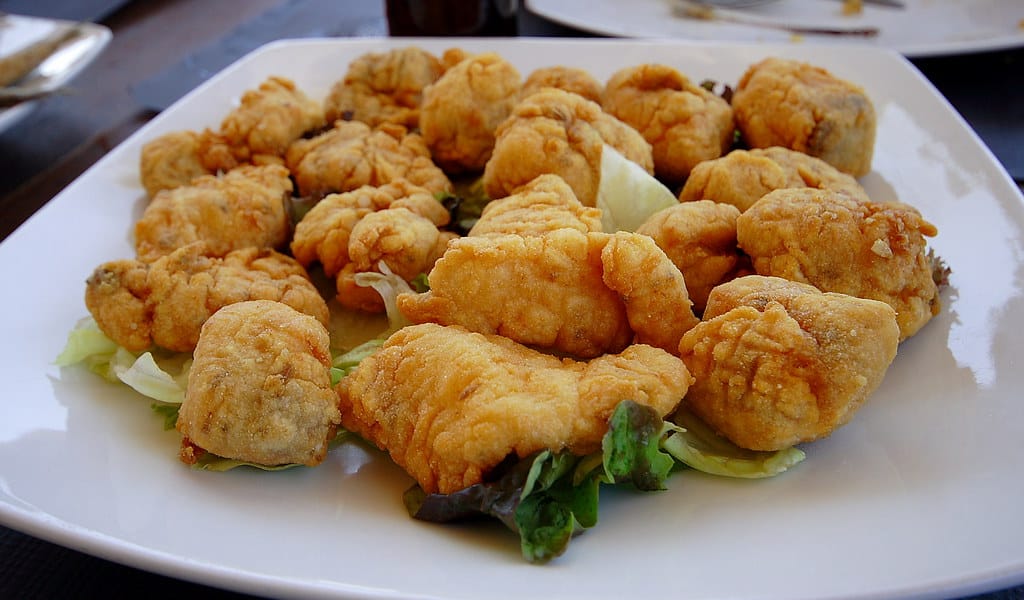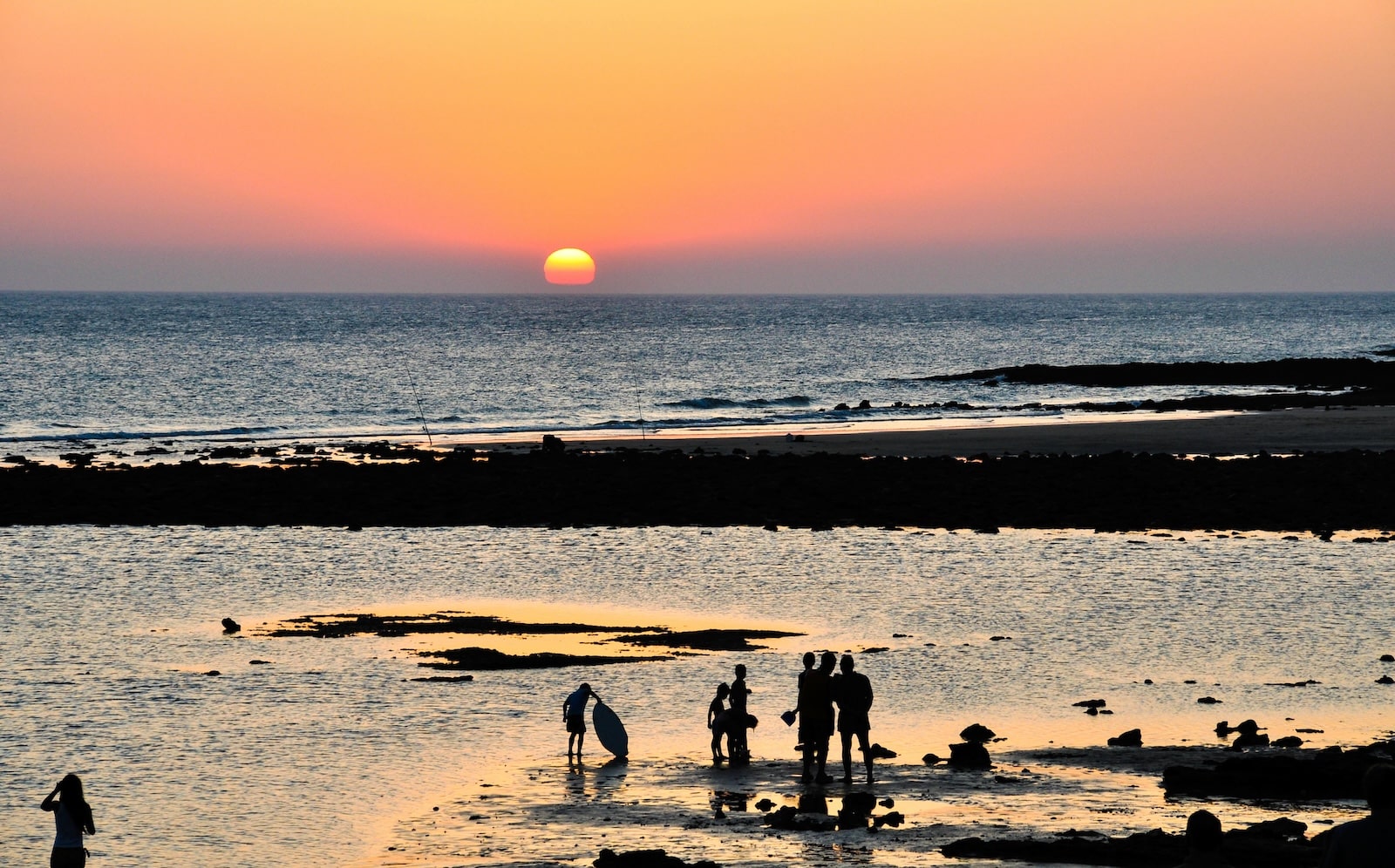Zahora is a small coastal settlement in the province of Cadiz, Andalusia. Known for its natural beauty and proximity to other tourist resorts, Zahora has seen an increase in tourism in recent years. This destination combines scenery, fauna and flora, together with a rich local culture. The gastronomic offer and traditions make it an attractive place for visitors seeking tranquillity and authenticity.
Discover Zahora
This little corner of Cadiz is a place full of charm and traditions. To discover Zahora is to immerse yourself in a stunning natural environment and a rich culture that has evolved over time.
Location and accessibility
Zahora is located in the province of Cádiz, in the autonomous region of Andalusia, specifically within the municipality of Barbate. This attractive destination is located among other coastal towns, such as Los Caños de Meca and Los Caños de Meca. El PalmarThis makes it a strategic point for tourism in the region. With a population of just over 480 inhabitants, Zahora maintains a peaceful and welcoming character.
The main roads provide easy access to Zahora, with the coastal network being the most used by visitors. The proximity to large towns such as Cádiz, Conil and Vejer de la Frontera allows tourists to arrive comfortably by car. Although much of the development consists of unpaved roads, the rural atmosphere and the beauty of the natural landscape create a unique experience for those seeking to escape the urban bustle.
History and tourism development
Over the years, Zahora has grown from a small village to a growing tourist destination. Its development has been influenced by the growing interest in ecotourism and sustainable tourism. Over time, various infrastructures have been built that have allowed the town to offer accommodation and services, without losing its traditional essence.
Zahora's appeal lies not only in its beaches and scenery, but also in its culture and history. Local traditions, such as the celebration of the Noche de San Juan, are clear examples of the rich heritage that has been maintained over time. As the tourist population has grown, the locals have adapted their customs, integrating modern elements without sacrificing their cultural identity.
Culture and traditions
Zahora's culture is a reflection of Andalusian coastal life, with traditions dating back generations. One of the most emblematic events is the Noche de San Juan, celebrated on 23 June. During this night, it is common to see bonfires on the beach, where locals and visitors alike gather to enjoy rituals, music and good company.
The gastronomy in Zahora also plays an important role in its traditions, highlighting the influence of the sea in the local dishes. Seafood products, especially almadraba tuna, are highly valued and form part of the daily life of its inhabitants. This link with the sea reinforces Zahora's identity as a unique destination where nature and culture are harmoniously intertwined.
Zahora Beach
Zahora Beach is a true paradise that stretches for approximately 3 kilometres. Its natural beauty, combined with a tranquil atmosphere and the diversity of the landscape, makes it an attractive destination for sea and nature lovers.
Features and natural beauty
Zahora Beach is characterised by its coarse, golden sand, which invites visitors to enjoy long days in the sun. The crystal clear waters that border the coastline are a rich turquoise colour, offering a spectacular contrast to the Mediterranean landscape. Along the beach, you can observe dune formations that provide an exceptional ecological value, contributing to the biodiversity of the area.
The natural environment is one of the great attractions of this place. The undeveloped areas to the east of the beach are home to a dune system where abundant vegetation grows, providing habitats for various species of native flora and fauna. The tranquillity of the environment is favoured by the absence of massive constructions, which allows you to enjoy the sound of the sea and the singing of the birds.
Highlights of the beach
Zahora Beach is divided into several areas, each with its own charm. The most important of these are described below:
- Quiet area: Located to the south, this section is ideal for those looking to relax in a natural environment. The lack of beach bars and services means that visitors can enjoy peace and direct contact with nature.
- Busy area: At the northern end, you will find chalets and beach bars, where life is especially lively during the summer months. This is where you can enjoy team activities and a more festive atmosphere.
- Trafalgar Lighthouse Area: This area has stunning views of the famous lighthouse, highlighting the scenic beauty that surrounds Zahora. It is an ideal place to capture stunning sunset photographs.
Activities and leisure on the beach
Zahora Beach offers a wide variety of leisure and sporting activities that allow you to enjoy its beauty to the full. Some of the most popular include:
- Water sports: The surfpaddle surfing and scuba diving are common practices in its waters. The quality of the waves and the clarity of the waters make Zahora a privileged place for sports lovers.
- Nature watching: The rich biodiversity that inhabits this coastline allows the observation of numerous species of birds. Nature lovers enjoy walking along the beach in search of birds and other animals.
- Routes and hiking: The hiking routes around the beach allow you to explore the surroundings, including the dune systems and the typical vegetation of the Mediterranean forest.
The climate in Zahora plays a fundamental role in the visitors' experience. With an oceanic Mediterranean climate, the weather conditions are quite pleasant, making it an attractive destination all year round.
Weather and best time to visit Zahora
The weather in Zahora: climatic specificities
Zahora is characterised by mild winters and warm summers. Temperatures during the winter are usually around 10ºC, while in the summer months, temperatures can reach up to 25ºC. This climatic moderation favours the local flora and fauna.
Rainfall is more frequent in the autumn and winter months, while the summer remains mostly dry. It is important to note that winds, especially westerly winds, can influence the thermal sensation, bringing coolness during hot days.
High and low season
The high season in Zahora runs mainly from June to September. During this period, the influx of tourists is notable, as many seek to enjoy the sun and the sea. The beaches tend to be more crowded, and recreational activities are at their peak.
- June: Beginning of summer with pleasant temperatures.
- July and August: The busiest and hottest months for tourists.
On the other hand, the low season is from October to May. Although temperatures are still pleasant, the visitor population is reduced. This makes for a quieter and more peaceful atmosphere.
- October: Usually warm days, although it starts to cool down.
- November to March: Ideal months for those who prefer to avoid the crowds.
Travel recommendations
For those planning to visit Zahora, it is essential to consider the weather. Choosing the right clothing is essential. In spring and autumn, it is advisable to take light clothing, but also something warm for the evenings. In summer, comfortable clothing and sun protection are essential.
It is recommended to schedule outdoor activities during the cooler hours, especially in the months of July and August. For those wishing to visit during the low season, it is suggested to explore both the beaches and the surrounding area with the peace and quiet offered by the less sunny days.
The Flora and Fauna in Zahora
The biological diversity of Zahora is one of its most valuable treasures. The flora and fauna that inhabit this coastal area create an ecosystem of great interest to nature lovers. The following are the most notable characteristics of this natural environment.
Flora characteristic of Zahora
The flora of Zahora is marked by the presence of typical Mediterranean forest vegetation. Among the most outstanding elements are:
- Pine forests and scrublandAdapted to the warm climate and sandy soil, these trees and shrubs provide vital shelter for numerous species.
- Primary DuneIn this area you can find species such as the sandbar (Ammophila arenaria) and the sea lily (Pancratium maritimum), which are essential for the conservation of the dune system.
- Secondary DuneLotus creticus is predominant here, although it is threatened by invasive species such as reed (Arundo donax).
- WetlandsThe reeds (Juncus maritimus) and bulrushes (Typha domingensis), which are essential for the local aquatic fauna, are present.
Local fauna and biodiversity
Zahora is home to a rich biodiversity, including several species of reptiles and birds. Among the most relevant are:
- ReptilesSuch as chameleons and ocellated lizards, which are of particular interest to biologists.
- InsectsThe area is home to rare species of butterflies, contributing to the richness of the ecosystem.
- AmphibiansThreatened species such as the gallipato (Pleurodeles waltl) and the toad runner (Bufo calamita) are common in these lands.
- BirdsThe presence of bark-finches, waders and sternids in the area adds to the beauty of the biodiversity, attracting ornithologists and photographers.
Ecosystem protection and threats
The Zahora ecosystem faces serious threats to its biodiversity. Factors such as uncontrolled urbanisation and forest fires threaten the native flora and fauna. For this reason, it is essential to implement conservation measures to protect this fragile environment. Recommended actions include:
- Environmental education: To inform the community and tourists about the importance of preserving the ecosystem.
- Control of invasive species: Implement programmes to manage and reduce the proliferation of species that threaten native biodiversity.
- Habitat restorationPromote projects to regenerate natural areas affected by urbanisation and other human factors.
Gastronomy of Zahora
Gastronomy is a fundamental aspect of Zahora, enriching the experience of those who visit this charming destination. The coastal influence and the culinary tradition of the region merge to offer a variety of unique flavours.

Typical dishes and local products
The gastronomic offer in Zahora is centred on fresh seafood and the rich agricultural heritage of the region. Typical dishes include:
- Fish frying: A selection of local fish, served crispy and golden.
- Gazpacho: This refreshing Andalusian dish is a perfect accompaniment on hot days.
- Salted fish: Prepared with freshness and simplicity, highlighting the natural flavour of the fish.
- Octopus salad: With tender octopus and fresh vegetables, it is a popular choice among visitors.
Delicacies of the sea: almadraba tuna
One of the gastronomic jewels of Zahora is the almadraba tuna. This traditional fishing method, which dates back centuries, catches tuna that migrate along the coast. This fish is famous for its exceptional flavour and texture.
Local restaurants prepare tuna in a variety of ways:
- Grilled bluefin tuna: Simply seasoned and cooked to perfection.
- Tuna tartar: A fresh and delicious option that highlights the quality of the product.
- Salted tuna: A tradition that allows this delicacy to be enjoyed all year round.
Chiringuito Restaurant La Kalima
One of the outstanding places to enjoy the local gastronomy is the Chiringuito Restaurante La Kalima. Acclaimed for its cosy atmosphere and sea views, it offers a menu that highlights the flavours of the coast. Its culinary proposal focuses on fresh and quality ingredients, promoting sustainable fishing.
Among its most emblematic dishes are:
- Rice with tuna: A dish that combines flavours from the sea and the land.
- Shrimp omelette: An irresistible snack that reflects the tradition of Cádiz.
- Homemade desserts: They perfectly complement the food with a sweet touch.
The place becomes a meeting point for locals and tourists alike, creating a festive and welcoming atmosphere.
Places and experiences nearby
Exploring the surroundings of Zahora offers a variety of options to enjoy the culture and nature of the region. From spectacular beaches to charming nearby villages, every corner presents a unique experience.
Excursions to Caños de Meca and El Palmar
Excursions to Caños de Meca and El Palmar are ideal for those looking to enjoy unspoilt beaches and breathtaking views. Caños de Meca is known for its bohemian atmosphere, where beach bars and surfing activities predominate. El Palmar, meanwhile, offers long golden sandy beaches and calm waters, perfect for relaxing and water sports.
- Caños de Meca: Natural areas for hiking and bird watching.
- El Palmar: Known for its gastronomy based on fresh fish and seafood.
Visits to the Trafalgar Lighthouse and Barbate
The Trafalgar Lighthouse, famous for its history and privileged location, is just a few minutes from Zahora. This symbol of the Andalusian coast offers panoramic views of the ocean and the coastline. Barbate, close to the lighthouse, is a picturesque village that combines tradition and modernity. Its streets, full of history, invite you to stroll through them and discover the gastronomic offer of the area, especially the tuna dishes, which are a local emblem.
- Trafalgar Lighthouse: A point of interest for photographers and sea lovers.
- BarbateLocal market where you can buy fresh seafood.
Discovering Vejer de la Frontera and Conil
Vejer de la Frontera, one of the most beautiful villages in Andalusia, is characterised by its cobbled streets and whitewashed architecture. This place offers a remarkable cultural heritage, including churches, castles and viewpoints overlooking the Cadiz countryside. On the other hand, Conil de la Frontera stands out for its lively atmosphere, its fine sandy beaches and its varied leisure and entertainment offer. Both destinations are ideal for enjoying the province's rich history and traditions.
- Vejer de la Frontera: Ideal for strolling and enjoying its viewpoints.
- Conil: Famous for its varied offer of bars and restaurants on the coast.
Tips to enjoy Zahora
To get the most out of a visit, it is essential to consider some key aspects that will allow you to fully enjoy the beauty and authenticity that this destination has to offer.
Accommodation and stay options
Zahora has a variety of accommodation options ranging from small flats and rented houses to resorts. The choice of type of stay may depend on budget and personal preferences. Some alternatives include:
- Rural houses, which offer a more intimate experience in contact with nature.
- Hotels with sea views, ideal for those looking for comfort and services.
- Camping, a popular choice for lovers of adventure and a simpler lifestyle.
It is advisable to book in advance, especially during the summer months when the influx of tourists increases significantly. Prices and availability can vary considerably, so be prepared.
Rules and respect for the environment
Respect for the natural environment is crucial to preserve the beauty of Zahora. Visitors should bear in mind some basic rules to minimise their impact on the local flora and fauna:
- Do not leave rubbish on beaches or in the countryside. Responsible waste collection is important.
- Respect species protection areas, especially those that are home to endangered wildlife.
- Avoid the use of fires in unauthorised areas, especially in times of fire risk.
- Follow the signs to the natural areas and respect the signposted paths.
These practices help to maintain the local ecosystem and ensure that future generations will also be able to enjoy this enchanting place.
Recommended activities in different seasons
Zahora offers a variety of activities throughout the year to suit the seasons. Some of the most popular include:
- In spring and autumn, walks along the paths around the beach allow you to appreciate the flora in its splendour.
- During the summer, water activities such as surfing, paddle surfing and snorkelling are ideal to take advantage of the mild temperatures and festive atmosphere.
- In winter, bird watching becomes an enriching experience, as many migratory species make Zahora their temporary home.
Regardless of the season, this destination has something to offer for those looking to connect with nature and enjoy a relaxing atmosphere.




